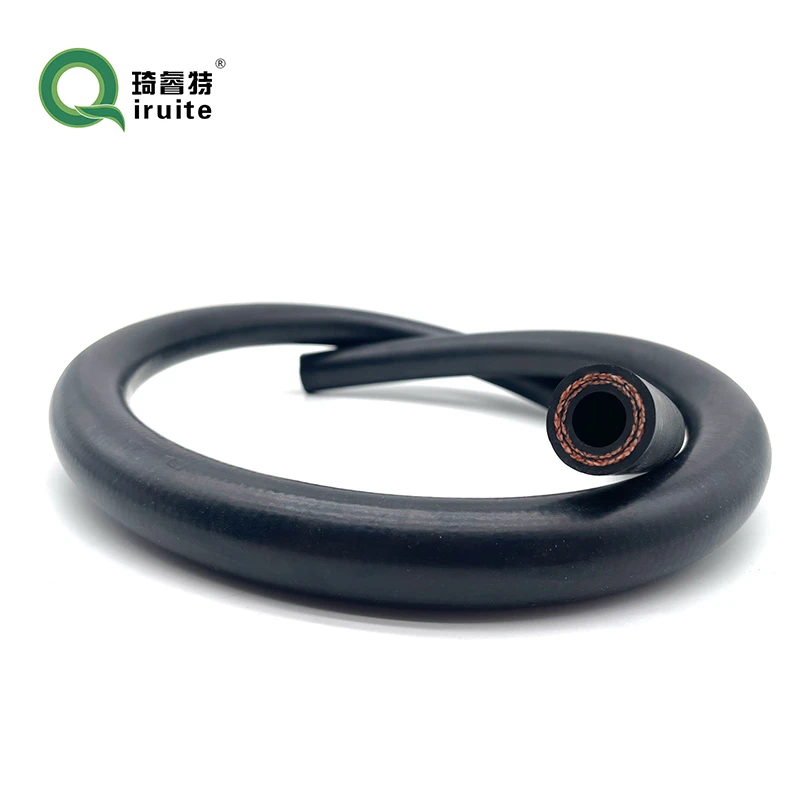what is a brake hose
Understanding Brake Hoses Their Importance and Functionality
The braking system is one of the most critical components of any vehicle, ensuring safety by allowing the driver to slow down or stop effectively. Among the various parts of this system, the brake hose plays a vital role, often overlooked during routine maintenance. In this article, we'll delve into what a brake hose is, its functions, types, and the importance of regular inspection.
What is a Brake Hose?
A brake hose is a flexible rubber or synthetic tube that transmits brake fluid from the vehicle's master cylinder to the brake calipers or wheel cylinders. When the driver presses the brake pedal, the master cylinder generates pressure in the brake fluid, which subsequently travels through the brake hoses to the brakes at each wheel. This hydraulic pressure pushes the brake pads against the brake rotors or drums, slowing down or stopping the vehicle.
Types of Brake Hoses
There are generally two types of brake hoses
1. Rubber Brake Hoses These are the most common type used in many vehicles. Rubber hoses are flexible, allowing for the movement of the vehicle's suspension and steering components. However, they are prone to wear over time due to exposure to heat, moisture, and various road conditions.
2. Stainless Steel Brake Hoses An alternative to rubber hoses, stainless steel hoses are wrapped in a flexible steel braid, making them more resistant to abrasion, heat, and expansion under pressure. This type provides a firmer pedal feel and improved brake response, making them popular in performance and racing applications.
The Importance of Brake Hoses
Brake hoses are crucial for the proper functioning of a vehicle's braking system. Here are several reasons why they should never be neglected
1. Safety A compromised brake hose can lead to brake failure. If there’s a leak or a blockage, the brake fluid cannot reach the brakes efficiently, resulting in diminished braking power. In emergency situations, this could be catastrophic.
what is a brake hose

2. Performance Healthy brake hoses maintain the integrity of the hydraulic braking system, allowing for consistent and reliable braking performance. Frayed or damaged hoses can lead to a spongy brake pedal feel and longer stopping distances.
3. Durability Brake hoses are subjected to extreme conditions, including heat and pressure. Over time, they can deteriorate due to age, exposure to the elements, and the corrosive nature of brake fluid. Regular inspection and replacement are essential to ensure that they operate properly.
Signs of Brake Hose Issues
Vehicle owners should be vigilant in monitoring the condition of their brake hoses. Here are some warning signs that may indicate a problem
1. Cracks or Bulges Inspect the hoses for visible wear, such as cracks, bulges, or fraying. Any significant deterioration could lead to failure.
2. Leaking Brake Fluid If you notice brake fluid on the ground where the vehicle is parked, it could indicate a bad brake hose or connection.
3. Spongy Brake Pedal A brake pedal that feels soft or spongy when pressed may suggest air in the brake lines, often caused by a compromised hose.
4. Increased Stopping Distance If your vehicle takes longer to stop than usual, it may be time to check the brake hoses.
Maintenance and Replacement
To maintain the performance and safety of your vehicle, regular inspections of the braking system, including brake hoses, are essential. Most manufacturers recommend inspecting the brake system during regular service intervals. If any issues are detected, it is crucial to replace the brake hoses immediately.
In conclusion, brake hoses are fundamental to the safe operation of your vehicle's braking system. Understanding their purpose, recognizing the signs of wear, and performing regular maintenance can significantly enhance your vehicle's safety and performance. By taking the time to care for your brake hoses, you are not only prolonging the life of your vehicle's braking system but also ensuring the safety of yourself and others on the road.
-
Ultimate Spiral Protection for Hoses & CablesNewsJun.26,2025
-
The Ultimate Quick-Connect Solutions for Every NeedNewsJun.26,2025
-
SAE J1401 Brake Hose: Reliable Choice for Safe BrakingNewsJun.26,2025
-
Reliable J2064 A/C Hoses for Real-World Cooling NeedsNewsJun.26,2025
-
Heavy-Duty Sewer Jetting Hoses Built to LastNewsJun.26,2025
-
Fix Power Steering Tube Leaks Fast – Durable & Affordable SolutionNewsJun.26,2025

